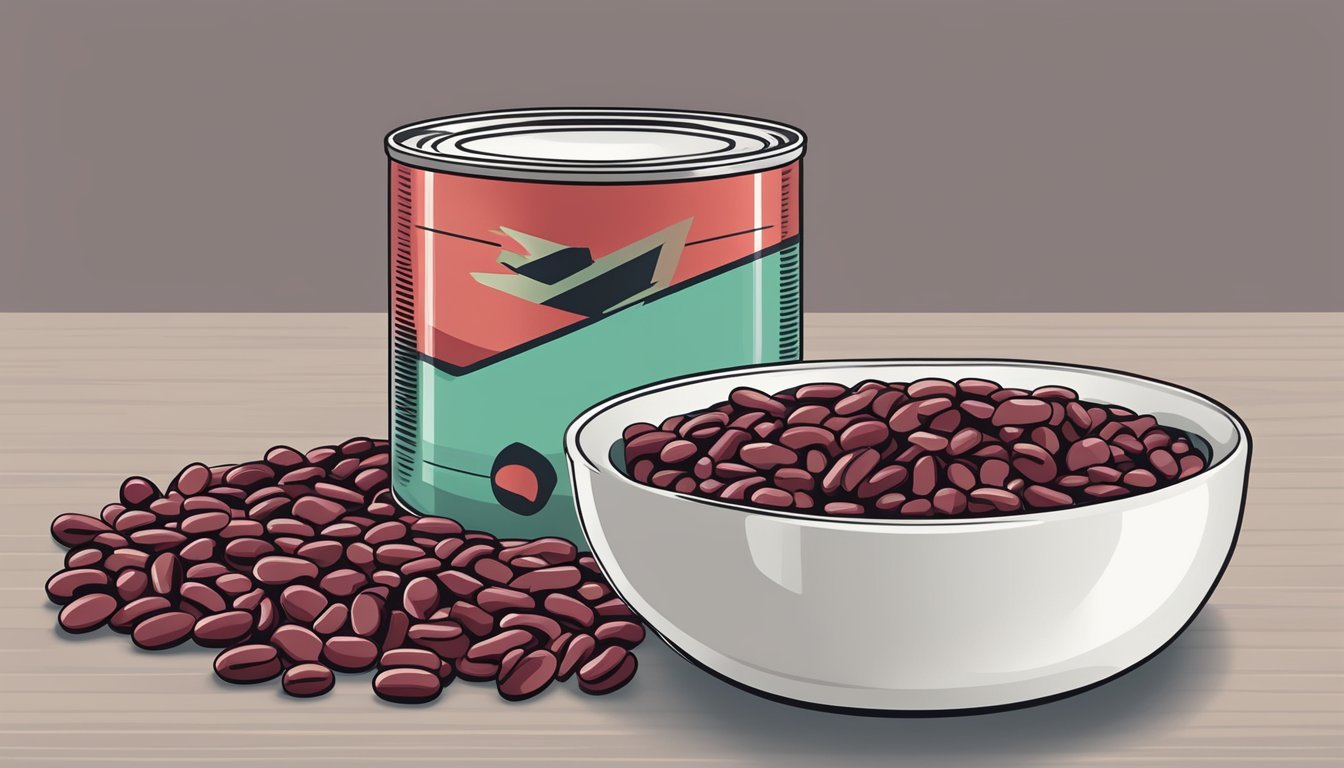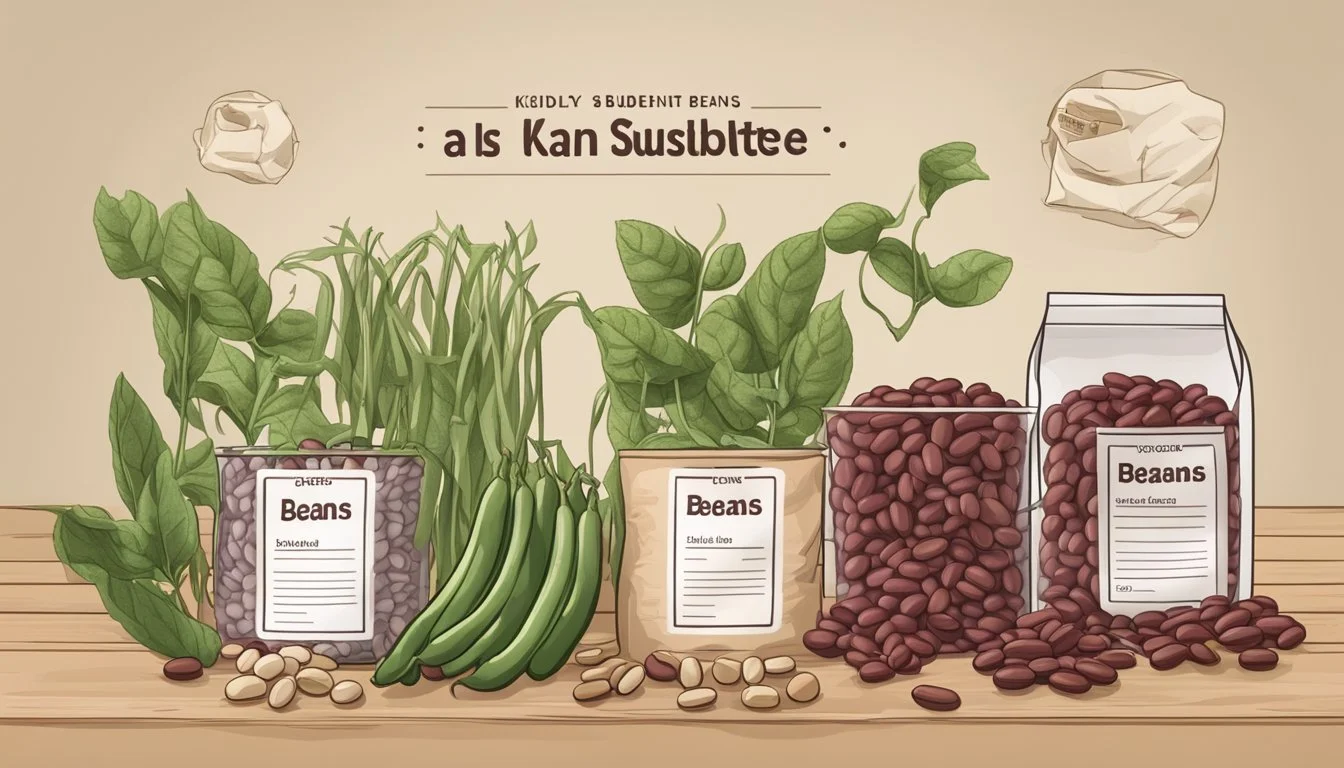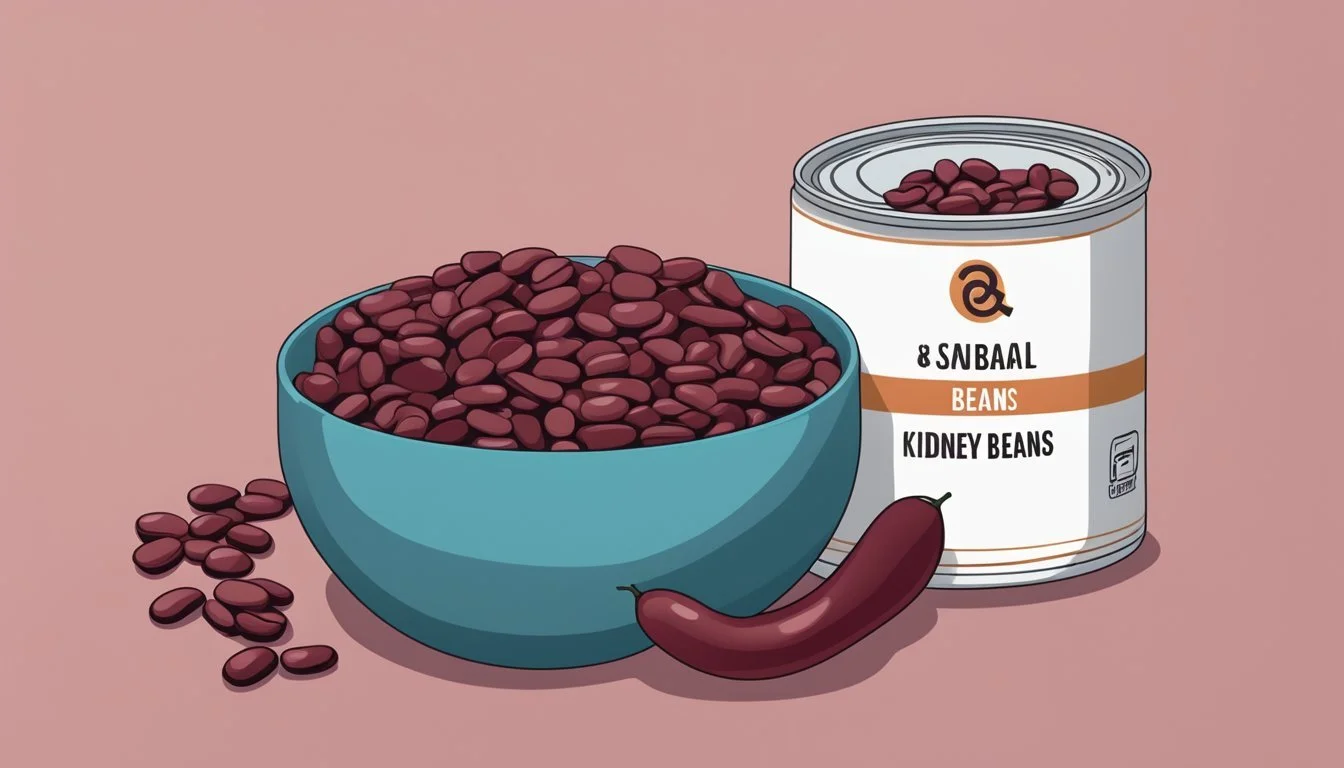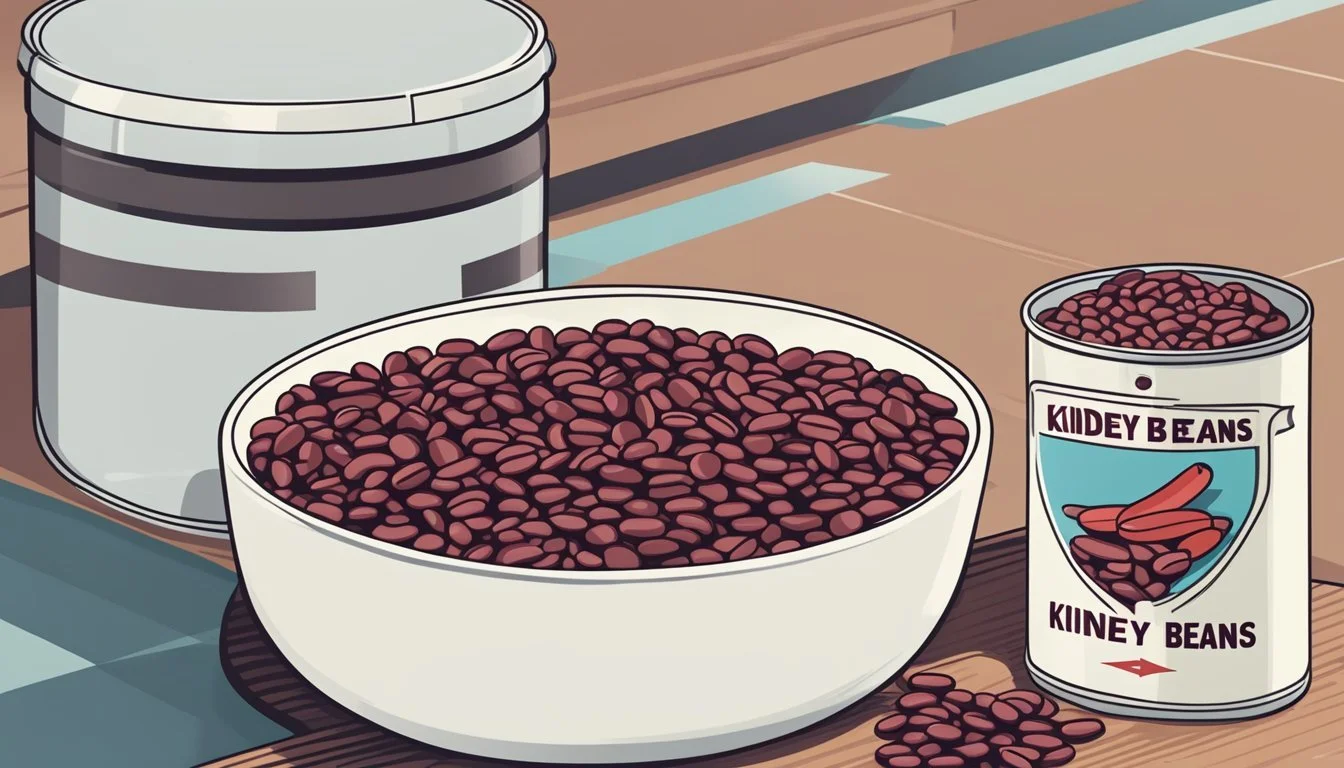How to Substitute Kidney Beans for Red Beans
A Step-by-Step Guide
Kidney beans, known for their deep red color and distinct shape resembling a human kidney, are a familiar staple in dishes ranging from hearty chilis to refreshing salads. They are praised not only for their robust flavor but also for their nutritional value, offering a rich source of protein, fiber, and essential nutrients. Yet, when a recipe calls for kidney beans and they are not available, or should a cook wish to experiment with different textures and flavors, it's useful to know suitable substitutes.
Red beans resemble kidney beans in many respects, including their flavor profile and texture. They are smaller in size but make a good substitute for kidney beans due to their similar taste. Swap in equal amounts of red beans in recipes that traditionally use kidney beans, such as soups, stews, or any dish that benefits from the beans holding their shape while being tender. The substitution works remarkably well, ensuring that the dish retains its intended essence.
Understanding Kidney Beans and Red Beans
Kidney beans and red beans are both nutritious legumes that offer a variety of proteins, vitamins, and minerals, with subtle differences in flavor and texture that can influence their use in recipes.
Characteristics of Kidney Beans
Kidney beans, often recognized by their distinctive shape that resembles the human kidney, are robust and full-bodied in texture. They contribute a rich, savory flavor that makes them a popular choice for hearty dishes like chili and stews. There are different types of kidney beans, including the common red kidney beans, which exhibit a deep red color and offer a slightly firmer texture. Kidney beans are known for their high protein content, providing a source of fiber that aids in digestion.
Characteristics of Red Beans
Red beans, also known as small red beans, tend to be somewhat smaller than kidney beans and possess a smoother, more uniform oval shape. Their texture is creamier, and they convey an earthy and mild flavor which is favored in dishes like red beans and rice. Like kidney beans, red beans also serve as a good source of protein and fiber, but they differ slightly in flavor and are preferred in certain cuisines for their distinctive taste.
Nutritional Comparison
Nutrient Kidney Beans per 100g Red Beans per 100g Calories Moderate Moderate Protein High High Fiber High High Iron 1.57 mg 2.09 mg Potassium 405 mg 332 mg Magnesium 47 mg 44 mg
While both kidney beans and red beans are excellent sources of nutrition, each has its unique strengths in mineral content. Kidney beans provide more potassium and magnesium, while red beans offer a slightly higher amount of iron. Despite these differences, both types of beans deliver essential vitamins, minerals, and protein, making them healthy additions to a balanced diet.
Culinary Uses of Kidney Beans and Red Beans
Kidney beans and red beans both offer rich flavors and satisfying textures, making them interchangeable in many dishes. They play a vital role in a diversity of culinary traditions, from Mexican to Creole to Indian cuisines, lending themselves to a variety of recipes.
In Classic Recipes
Numerous classic recipes call for red beans, such as the iconic red beans and rice, a staple in Creole cooking. Kidney beans can be substituted seamlessly in this dish due to their similar texture and ability to absorb flavors. Another beloved dish, chili con carne, often incorporates red beans, but kidney beans are a suitable substitute that maintains the hearty quality of the chili.
In Soups and Stews
Both kidney beans and red beans contribute to the heartiness and nutritional value of soups and stews. They thicken the broth and provide a meaty texture. In a classic bean soup or an earthy stew, substituting kidney beans for red beans is almost unnoticeable, as both beans hold up well to long cooking times and meld with a range of herbs and spices.
In Salads and Side Dishes
In lighter fare, like bean salads and side dishes, kidney beans can replace red beans. Their robust size and full-bodied taste complement other salad ingredients, while maintaining the integrity of the dish. Side dishes such as bean-based medleys benefit from the kidney bean's ability to stand firm without becoming mushy.
In International Cuisines
Kidney beans adapt well to the flavors of Mexican, Creole, Indian, and Latin American cuisines, making them adaptable in recipes traditionally calling for red beans. In Mexican dishes like bean tacos, kidney beans contribute the necessary texture and flavor. Similarly, in Indian cuisine, kidney beans are often the bean of choice in recipes like Rajma, a North Indian red kidney bean curry, demonstrating its pivotal role in such international dishes.
How to Substitute Kidney Beans for Red Beans
When substituting kidney beans for red beans, one should consider the cooking method and desired flavor profile of the dish. Kidney beans can effectively replace red beans due to their similar taste and texture, making them ideal for various recipes.
In Soups and Chili
For soups and chili, kidney beans are an excellent substitute. They maintain their shape well, providing a satisfying texture that complements the hearty, robust flavors typically found in these dishes. To substitute, use equal parts kidney beans in place of red beans, ensuring that the beans are cooked until tender to achieve a similar mouthfeel.
In Salads and Rice Dishes
Kidney beans can be seamlessly incorporated into salads and rice dishes, replacing red beans on a one-to-one ratio. Their firm texture adds a substantial quality to these lighter meals, and their mild flavor does not overpower other ingredients. It is important to rinse canned kidney beans before adding them to salads to prevent discoloring the other ingredients.
In Vegan and Vegetarian Meals
For vegans and vegetarians, kidney beans serve as a nutritious plant-based protein source, akin to red beans. They can be used interchangeably in plant-based meals without compromising the nutritional profile. The beans' creamy texture pairs well with a variety of vegetables and grains, making them versatile in meat-free diets.
Similarity in Taste and Texture
The flavor profile of kidney beans closely resembles that of red beans, with a slightly nuttier edge, yet well adaptable to an array of seasonings and spices. Their similarity in taste and texture allows for a straightforward substitution process in any dish that originally calls for red beans.
Choosing the Best Substitutes for Kidney Beans
When looking for the best substitutes for kidney beans, it's important to consider bean varieties that closely match their texture and flavor profiles, cooking considerations, and even non-bean alternatives for special dietary needs.
Alternative Bean Varieties
The choices for bean substitutes range from pinto beans to cannellini beans, all known for their unique contributions to dishes. Pinto beans are similar in size and possess a rich, nutty flavor that complements most recipes that traditionally use kidney beans. Great Northern beans and navy beans provide a creamy texture, making them excellent for soups and stews. Cannellini beans are larger with a meatier texture, suitable for hearty meals. For those requiring a slightly sweeter note, borlotti beans (also known as cranberry beans) are an optimal choice.
Considerations for Cooking and Texture
Substitutes should not just match in flavor but also in cooking behavior and final texture. Cannellini beans and navy beans cook down to offer a creamy consistency similar to kidney beans and therefore work well in purees or dishes where a smoother texture is desired. Black beans, while offering a distinct color, can also be an alternative with a robust and slightly sweet flavor profile, but cooking times can vary. Adjusting the cooking time is essential to prevent substitutes from becoming too mushy or remaining too firm.
Non-Bean Alternatives
For those avoiding beans, alternatives like lentils, chickpeas, peas, soybeans, and lima beans are commendable options. Lentils cook quickly and provide a similar protein content, while chickpeas have a firmer texture and a nuttier flavor, lending themselves well to a variety of dishes. Lima beans, larger in size, could mimic the succulence of kidney beans to some extent. These options are not only nutritious but also cater to a wide array of dietary preferences and restrictions.
Incorporating these substitutes into meals requires attention to their individual characteristics and how they pair with other ingredients, ensuring a well-rounded dish.
Preparation Tips for Bean Substitutes
When choosing to substitute kidney beans with red beans, it's essential to consider factors such as preparation method, cooking times, and flavor profiles to achieve a successful dish.
Cooking Dried Versus Canned Beans
Dried beans require thorough rinsing and a prolonged cooking time to achieve the soft texture kidney beans naturally possess. They typically need to soak overnight and then cook for approximately 1-2 hours. In contrast, canned red beans are already cooked and only need to be warmed up, reducing the cooking time for your recipe significantly. To replace kidney beans in your recipe:
Dried red beans: Soak 1 cup dried beans overnight, then cook until tender.
Canned red beans: Use an equal amount, typically 1 cup canned red beans for 1 cup cooked kidney beans.
Adjusting Seasonings and Flavors
Red beans have a flavor profile that is similar to kidney beans but slightly sweeter and less earthy. When substituting, one may need to adjust the flavors to match the dish's intended taste. Since red beans can be milder, consider intensifying the savory and aromatic components of your recipe. Add a pinch more of cumin or paprika for a deeper flavor akin to kidney beans. Additionally, ensure to taste and adjust for salt content, as canned beans can contain added sodium.
Tips for Texture and Consistency
Kidney beans are known for their firm texture and creamy interior. To mimic this in dishes where kidney beans are replaced by red beans, particularly if aiming for a creamy texture in soups and stews, it could be necessary to:
Mash or purée a portion of the red beans to thicken the dish and increase creaminess.
Adjust cooking times; red beans tend to become soft more quickly, which can be an advantage when aiming for a smooth consistency.
Common Questions about Substituting Beans
When substituting beans, individuals often have concerns regarding the effects on weight loss, health goals, and how to navigate potential allergies or dietary restrictions. The following subsections address these points with specificity to guide dietary choices effectively.
Impact on Weight Loss and Health Goals
Replacing kidney beans with other beans can have a minimal impact on weight loss and health goals due to similar nutritional profiles. Most beans, including red beans, are high in fiber and plant-based protein, which are critical for maintaining a healthy diet and aiding in weight management.
Fiber: Essential for a feeling of fullness, which can prevent overeating.
Plant-Based Protein: Supports muscle repair and growth, important for overall health.
Beans are also generally nutritious, making them a staple in vegetarian and vegan diets. However, it's essential to compare the specific nutritional content of the substitute bean to ensure it aligns with one's dietary goals.
Allergies and Dietary Restrictions
When substituting kidney beans, one should consider allergies and dietary restrictions. Here's a breakdown of factors to consider:
Allergies: Some individuals may have allergies to specific types of beans. It's crucial to identify safe alternatives.
Dietary Restrictions: For those following vegan or vegetarian diets, ensuring that the substitute beans provide comparable nutritional value is essential.
In summary, when selecting substitutes for kidney beans, opt for beans that align with the individual’s health objectives and dietary needs. It's important to remember that most beans share similar nutritional benefits, contributing positively to a balanced diet.
Conclusion
When replacing kidney beans in various recipes, cooks can consider multiple alternatives that suit different meals and cuisines. Pinto beans are excellent in Mexican and Southwestern dishes. They can be swapped in equal amounts and perform well in soups, stews, and chilis.
Butter beans, with their higher fiber content, can also enrich recipes nutritionally while offering a slightly lower protein count. They are a good addition to soups and salads and provide essential nutrients such as folate and magnesium.
For those seeking a similar taste and nutritional profile to kidney beans, Great Northern beans are an ideal choice. They are slightly larger, have a milder flavor, and their creamy texture is a boon in recipes like baked beans.
Red beans, especially small red and pink beans, maintain the traditional aesthetic of kidney beans and can be used in a 1-to-1 ratio. These beans fit seamlessly into bean burgers, tacos, bean salads, and casseroles, diversifying the palate without deviating far from the expected taste and nutritional value.
Lastly, the light green mung beans are an antioxidant-rich option suitable for Asian dishes. They adapt well to curries, salads, and compliment the flavors of these cuisines.
Here is a concise substitution guide:
Kidney Bean Substitute Best Used in Note Pinto Beans Mexican/Southwestern cuisine Nutty flavor; smooth texture Butter Beans Soups, salads Higher fiber; slightly less protein Great Northern Beans Baked beans, similar to kidney Larger size; milder flavor Small Red/Pink Beans Tacos, salads, casseroles Aesthetic match; 1-to-1 substitute Mung Beans Asian curries, salads Antioxidant-rich; adapts well to Asian dishes
For any recipe calling for kidney beans, the listed substitutes are reliable and maintain the integrity of the dish's flavor and texture profile. Chefs and home cooks alike have flexibility in choosing the right bean for their culinary creations.








